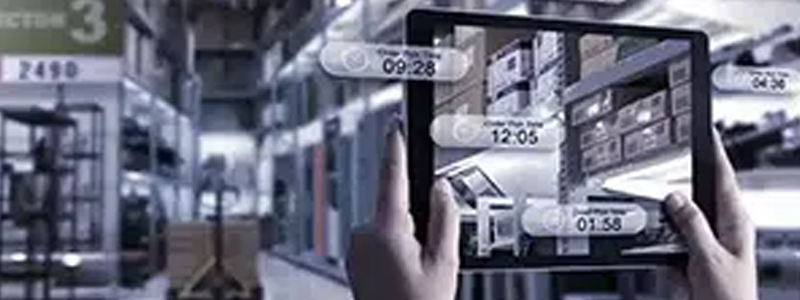Cost Calculator
Calculate Your Employee’s “Actual” Hourly Rate & Workflow Cost!
Understanding The Numbers Will Set The Stage For A Good Strategy.
Let’s Start By Calculating Your Full-Time Employee’s Actual Hourly Rate!
This cost calculator helps you understanding the labor costs associated with each manual task that will be used later.
Follow the steps on this page to (Step 1) determine how much you pay the employees by the hour that are working to carry out the manual tasks within a workflow.
— Step #1 —
Calculate Your Employee’s “Actual” Hourly Rate!
Base Salary
Base salary is the paid to an employee, not including any benefits, bonuses, overhead, G&A or raises.
Direct Expenses
These are the expenses related to the employee's base salary paid by the company that go beyond the base salary but should be included. Direct expenses include:
• FICA & Unemployment = 9.5%
• Medical Insurance = 7.1%
• Dental & Other Incidentals = 1.5%
• Retirement 401k Match = 3.5%
• Bonus = 6.8%
NOTE: If your calculations are different then these, feel free to enter in 0% to 100% depending upon your company's rates. For Example: - if your "bonus = 15%" and your "401k match = 6%" then together they equal 21%. Next, subtract our number of 10.3% from your number of 21% and add the difference to our preloaded number of 28% (28% + 10.7% = 38.7% for direct expenses rate) .
Indirect Expenses
When determining what a workflow actually costs, or comparing apples to apples between full-time vs. outsourcing (consultants have these figures included in their hourly rate), these are the expenses that are often forgotten as required costs of doing business and having an employee on staff. Indirect expenses include:
• CEO
• CFO
• HR & Recruiting
• Finance Department
• Marketing
• Sales
• IT
- • Hardware
• Software
• License/Fees
• Support
• Infrastructure
- • Mortgage & Interest
• Property Taxes
• Utilities
• Office Furniture
• Facilities Expenses
• Office Supplies & More
NOTE: If your calculations are different than these, feel free to change the percentage to fit your company's overhead & G&A. For Example: According to a 2018 Deltek survey (source) that included 638 respondents, in companies listed as Small (under $20 million), Medium ($20 to $99 million), and Large (over $100 million), and included over 90 questions, found the average indirect expenses for the different company sizes came in at Small Business = 56%, Medium Businesses = 57%, and Large Businesses = 48%
Actual Salary
Base Salary plus direct and indirect expenses determine "Actual Salary.
Based on 2080 hours in a year (260 workdays x 8 hours each day) — Minus 168 hours for paid vacation (21 days) — Minus 64 hours paid holidays and (8 paid holidays) = 1,848 — Adjust to fit each employee's specifics.
Calculated Base Hourly Rate
"Actual Salary" divided by "Maximum Hours Available."
NOTE: This is the amount you pay each hour to your employee whether they are productive or not. This amount should not be used when comparing hourly rates of freelance or consulting outsourced resources. Outsourced resources tend to be at a 96% to 98% productive rate due to the nature of their role. Full Time Employees (FTE), based on multiple research articles and data, tend to run between 37% and 78% productive within an 8-hour workday, depending upon their job description.
We’ll Use The “Calculated Base Hourly Rate” For The Calculations In Step #2.
Now Let’s Calculate How Much Your Manual Tasks Cost The Company?
Calculate The Cost Of Your Manual Tasks Within A Workflow.
Not all workflows can be completely automated.
We’ll identify the areas that can be automated after we identify the current cost of your workflows to the company.
— Step #2 —
Calculate “The Cost of Your Manual Tasks” And Put A Value On Automating!
Employees Base Hourly Rate
"Actual Salary" divided by "Maximum Hours Available."
SECTION B: Manual Task – Hourly Rate Costs
Each Task Takes... (Minutes)
This number relates to the amount of time in minutes that it takes to start and finish a single or set of manual tasks in a workflow before the process is restarted. Not every task within a workflow can be automated but it is rare when related to handling data in a repetitive situation. Only count the time that is spent on the manual task(s) and enter in minutes (i.e. if 30 minutes enter 30. If 1 hour and 12 minutes enter 72)
Number of Times Performed...
This number is based on one person or one team performing the task/workflow, one time, from beginning to end. Select the period of time using the dropdown just below.
Per... (Select a Period of Time – Dropdown)
Select a time period (hour, day, week, month) relating to the number of times the task is performed within the selected period above.
Number Of Employees Performing Task(s)
Look at how many employees the workflow requires to get from the beginning to the end of a single task. For example, if the task starts at one desk in customer service, moves to another desk in accounting, and is finished in sales, the workflow requires three (3) employees to complete the task, one time, from beginning to end. In this case place a number 3 in this space.
NOTE: In this case you may need to calculate multiple salary amounts. This can be done in the more detailed calculator below.
SECTION C: Manual Task – Cost Of Errors
Estimated Number of Manual Errors Made During A Specific Period of Time
With all manual task there is human error. The cost of human error is an important factor when determining if a tassk can be automated and if it is worth the investment. This space asks for the estimated number of errors that occur during the period of time used above in the dropdown.
Estimated Time Required To Resolve Each Manual Error (In Minutes)
With any error there is time required to fix it. Although this box had the potential to increase the cost over and above what the actual salary is, it is important to account for the time and expense of the error since the lost time dicates how much actual successful work can be accomplished and lowers this number. In this space estimate the time it typically takes to go back and fix an error.
Estimated Material or Legal Cost Associated With Each Manual Error
Not all errors have a material cost. However, if you are a printer and you run the press for an hour before realizing the job was incorrectly plated the expenses can become quite high, to include press time, materials, and hourly rate expenses across the company. In other instances, legal expenses can be associated with a mistake. In this space record the estimated expense that can be associated with an error. Note that this box is multiplied by the typical number of errors made within the dropdown selected time period.
Days In The Year
Assuming 261 Working days in a year. You can change this number if your calculations are different.
Monthly Cost To Company
Based on 21.75 Working Days. This number does not include the cost of supporting the current manual workflow, maintenance, license fees for the computer-based software, etc., which will show up if you do a more detailed feasibility study.
Yearly SALARY Cost
This is the total cost to the company in one year just in salary paid to perform the manual task.
Yearly COST OF ERRORS
This is just the amount the company typically spends in a year on errors related to the manual task.
Yearly TOTAL COST Of Manual Task/Workflow To Company
Based on 261 Days, unless the number in the space above was changed. This number includes salaries paid and material expenses related to the manual task. IMPORTANT: this number does not include the cost of supporting the current manual workflow, maintenance, license fees for the computer-based software, downtime, etc., which will show up if you do a more detailed feasibility study.
Consider having Intertech automate and combine multiple workflows for further savings.
Finally, Estimate How Much You Will Save By Automating The Process!
Important Note: If you don’t have an estimate for the work, enter an idea of what it may cost to update or let us provide one for you!
Ask yourself, how much are the manual errors costing the company, and could we be doing more work more efficiently if the process was automated? Then, tell us what you are doing and we’ll let you know if and how we can help.
Not Sure Which Tasks Can Be Automated?
Not all workflows can be completely automated, so let’s identify the ones that can!
First, the link below will help you identify all the tasks within a workflow and determine which can be automated. Once you identify the tasks, you can calculate the total time the tasks takes, from start to finish. Finally, you’ll be able to add up the time and use these numbers to find out how much you can save by automating.
Use this link to instantly identify manual tasks that should be automated (Click Here)
Determine Your Company's Appetite For Automated Improvements.
Identify Processes That May Lend Themselves To Automation.
There are two items to consider. (1) The first is which processes are repetitive. The repetition can be spread over hours or days, but a job is typically based on repetition. (2) The second item to consider is what is being generated from the process. Typically it is data, and when data is generated and collected in the correct form it can be used for completing the process, forcasting, and modeling past results. Make sure to onsider all steps within the workflow.
Identify Specific Steps Within Each Targeted Process For Automation.
Identify Quick Wins And Areas For Long-Term Expansion And Sustained Growth!
Additional Expenses Relate To Your Tasks, But The Future Is Efficiency.
Consider speaking with Intertech. We can help you assess your workflow and help develop a plan that fits your budget, your IT department’s vision, and does exactly what you need.
FTE Productive Hourly Rate Calculator
100% equals an 8-hour day without breaks, 87.5% equals a 30 minute lunch break and two 15 minute breaks while the rest of the day is productive.
Universally Accepted Productivity Rates:
• Freelance Developer = 96%-98%
• Consultant Developer= 96%-98%
• Full-Time Employee – Developer = 74% to 81%
• Full-Time Employee – Base = 37% to 47%
It is important to remember that corporate required training, events, seminars, expectations, oversight, and other factors take away from actual work and lower the productivity rate of a full-time employee, while an outsourced freelance and consulting resource’s hourly rate is based on a much higher productive rate per hour due to the nature of their position and expectations (typical rates listed above).
FTE = Full Time Employee
RESULT: Employees Productive Hourly Rate (PHR)
PHR is the rate that you should use when determining (a) what you are actually paying your employee for work accomplished, and (b) the number you should use to determine cost of project development, and when comparing an outside resource bid.
DEFINITIONS:
Base Salary
Base salary is the paid to an employee, not including any benefits, bonuses, overhead, G&A or raises.
Direct Expenses
These are the expenses related to the employees base salary paid by the company that go beyond the base salary but should be included. Direct expenses include:
• FICA & Unemployement = 9.5%
• Medical Insurance = 7.1%
• Dental & Other Incidentals = 1.5%
• Retirement 401k Match = 3.5%
• Bonus = 6.8%
NOTE: If your calculations are different then these, feel free to enter in 0% to 100% depending upon your company’s rates. For Example: – if your “bonus = 15%” and your “401k match = 6%” then together they equal 21%. Next, subtract our number of 10.3% from your number of 21% and add the difference to our preloaded number of 28% (28% + 10.7% = 38.7% for direct expenses rate) .
Indirect Expenses
When determining what a workflow actually costs, or comparing apples to apples between full-time vs. outsourcing (consultants have these figures included in their hourly rate), these are the expenses that are often forgotten as required costs of doing business and having an employee on staff. Indirect expenses include:
• CEO
• CFO
• HR & Recruiting
• Finance Department
• Marketing
• Sales
• IT
- • Hardware
• Software
• Lincense/Fees
• Support
• Infrastructure
- • Mortgage & Interest
• Property Taxes
• Utilitiess
• Office Furnature
• Facilities Expenses
• Supplies & More
NOTE: If your calculations are different then these, feel free to change the percentage to fit your company’s overhead & G&A. For Example: According to a 2018 Deltek survey (source) that included 638 respondents, in companies listed as Small (under $20 million), Medium ($20 to $99 million) and Large (over $100 million), and included over 90 questions, found the average indirect expenses for the different company sizes came in at: Small Business = 56%, Medium Businesses = 57%, and Large Businesses = 48%
Actual Salary
Base Salary plus direct and indirect expense determine “Actual Salary.
Based on 2080 hours in a year (260 work days x 8 hours each day) — Minus 168 hours for paid vacation (21 days) — Minus 64 hours paid holidays and (8 paid holidays) = 1,848 — Adjust to fit each employee’s specifics.
Calculated Base Hourly Rate
“Actual Salary” divided by “Maximum Hours Available.” based on 100% productivity
Estimated Daily Productivity
(See above notes)
Employees Productive Hourly Rate
Outsourced resources tend to be at a 96% to 98% productive rate due to the nature of their role. Full Time Employees (FTE), based on multiple research articles and data, tend to run between 37% and 78% productive within an 8-hour work day, depending upon their job description. THIS IS THE NUMBER TO USE WHEN COMPARING OUTSOURCED RESOURCES HOURLY RATES & ESTIMATES because their rates include all direct and indirect expenses.














